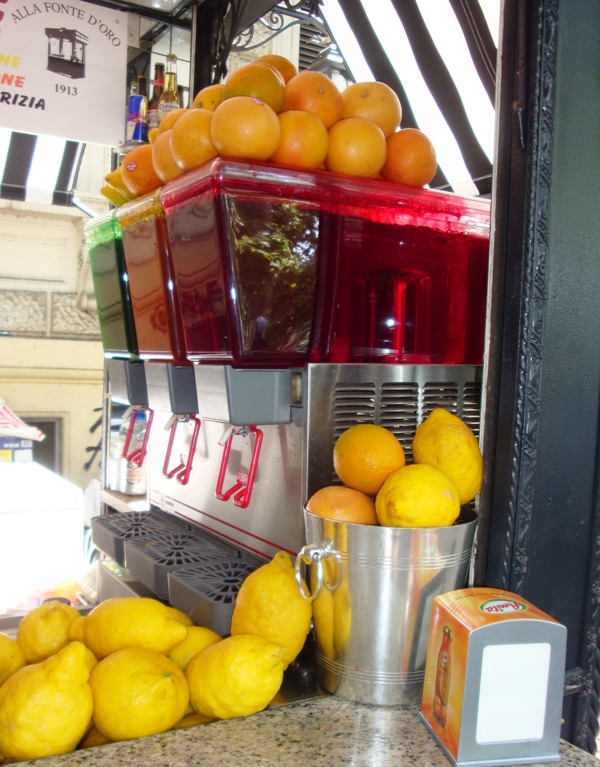In the "quaternity" of Roman pasta dishes, pasta alla carbonara, in my opinion, is tied for first place. (I have to give it up for the only pasta dish with a tomato-based sauce, all'amatriciana). Carbonara holds a special place in my heart as a dish I learned to make as a student in Florence 26 years ago. The backstories are myriad, including one falsely perpetuated by countless tour guides in Rome that this was the pasta version of bacon and eggs beloved by American soldiers, who brought the flavor combo to Italy during World War II.
But no, though this is a dish eaten in various parts of the Italian peninsula, carbonara is a classically Roman dish, with Roman roots. This is proven by one of its key ingredients: guanciale, a distinctly Roman cut of pig that is its cured, highly-spiced jowl. This guanciale gives the carbonara sauce its unctuous undertones and the emulsified sheen in its egg yolk-enriched sauce. In reality, a carbonara is not a real carbonara if it uses pancetta (or heaven forbid...bacon!) as the porky element in the dish. Of course, the dish gets its saltiness from the cheese used: unequivocally pecorino romano (never parmigiano! Never grana padano!), a Roman sheep's milk hard aged cheese and the saltiest of the grating cheeses in the Italian culinary repertoire. This is another clue to the dish's Roman origin. The cracked black pepper is important as well -- the little flecks supposedly represent coal, as the dish is named after coal miners (carbonari) -- another origin story of this dish. Some claim the pasta was instead favored by the Carbonari, a secret political society of nationalists who tried to revolutionize Italy in the early 19th century (predating Italian unification), though dried pasta was not readily available to the general population until after World War II, so this is unlikely. Some believe it was created at a restaurant in Rome called "La Carbonara" (which could certainly be true, in terms of timeline and location). Whatever the correct origin story, the important thing to remember? This dish is Roman. It must be treated as such.
Now, I've had plenty of "inauthentic" carbonaras in Italy (not Rome) that used pancetta to pretty good effect, and even...dare I say...used a touch of heavy cream to help with the consistency of the sauce. This is heresy to a Roman cook, however. And since I like to stick to the classic preparation before allowing adept chefs to deviate from the original (one must study Renaissance art before one can paint like Picasso or Pollock, after all), I will present you here with a classic Roman recipe. One thing to remember, however: it is never, ever, EVER okay to add peas to a carbonara. Ever. Thank you and buon appetito.
PASTA ALLA CARBONARA (4-6 people)
2 TBS. extra-virgin olive oil
½ lb. thickly sliced guanciale (pancetta, in a pinch) cut into small strips
3 whole eggs and 3 egg yolks, lightly beaten
Generous couple of pinches of fresh ground black pepper
Salt to taste
1 lb. spaghetti or short pasta (like bombolotti or rigatoni)
1 cup grated pecorino romano cheese
-Bring a large pot of water to a boil.
- Once the water comes to a rolling boil, add a generous couple of pinches of salt (the water should be briny, almost like seawater), and toss in the pasta and stir. Cook pasta until al dente. (*Note: in the photo here, the white ring of still-uncooked pasta at the center of the shape means the pasta is al dente, and should be removed from the water immediately).
-Heat a large skillet over medium heat, add the olive oil, and then add the guanciale (or pancetta), cooking until lightly browned and almost crisp.
- Meanwhile, in a medium bowl, whisk the eggs with the salt, pepper, and ½ cup of the pecorino cheese.
- When the pasta is al dente, drain the pasta and add directly to the pan where the guanciale was cooked (the pan should be warm but turn the flame off before adding the pasta).
- Add the egg mixture to the pan and toss pasta and guanciale to coat. This is the tricky step: the egg sauce should be warm enough that it thickens to form a sauce (not just raw eggs), but shouldn’t be so hot that the eggs cook and become scrambled. Turn on a low flame if necessary to help gently cook the egg sauce.
- Add a generous handful of the pecorino, and turn to mix thoroughly.
- Serve at once.





























